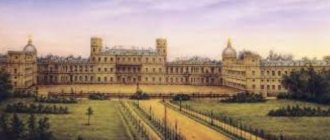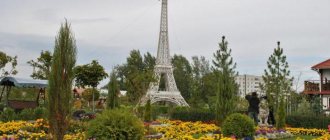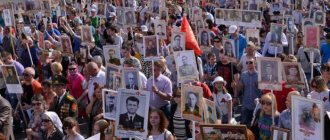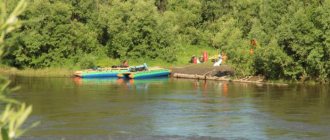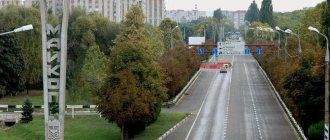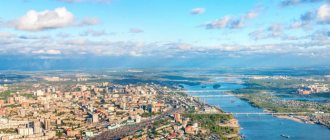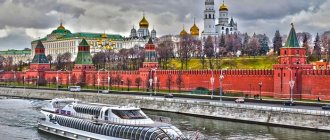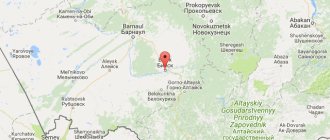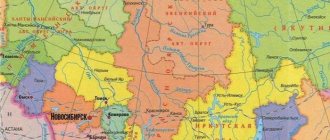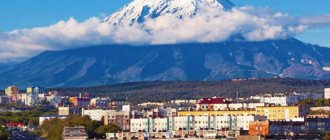Where is Mordovia located and who lives in it
The Republic of Mordovia is located in the Volga Federal District. This republic borders with the Nizhny Novgorod, Ryazan, Ulyanovsk and Penza regions, as well as with the Republic of Chuvashia.
The geographical position of Mordovia is as follows: part of it belongs to the Oka-Don Plain, and the other part belongs to the Volga Upland. Another important fact is the proximity of Mordovia to our capital - only 398 km. The total area of Mordovia is 26,128 km2, divided into 22 administrative districts, which include 14 urban-type settlements and 7 cities. The capital since 1934 is the city of Saransk.
The population of the Republic of Mordovia is slightly more than 800 thousand, which indicates a fairly dense population of the territory. The main nationalities living in these territories are Mordvins, Russians and Tatars. In total, the area of Mordovia accommodates more than 110 different nationalities.
[edit] Administrative-territorial division
The Republic of Mordovia includes one city of republican subordination (Saransk and 22 municipal districts:
- Ardatovsky municipal district, district center - Ardatov;
- Atyuryevsky municipal district, district center - village. Atyurevo;
- Atyashevsky municipal district, district center - village. Atyashevo;
- Bolshebereznikovsky municipal district, district center - village. Bolshie Berezniki;
- Bolsheignatovsky municipal district, district center - village. Bolshoye Ignatovo;
- Dubyonsky municipal district, district center - village. Dubyonki;
- Elnikovsky municipal district, district center - village. Elniki;
- Zubovo-Polyansky municipal district, district center - village. Zubova Polyana;
- Insar municipal district, district center - the city of Insar;
- Ichalkovsky municipal district, district center - village. Kemlya;
- Kadoshkinsky municipal district, district center - village. Kadoshkino;
- Kovylkino municipal district, district center - Kovylkino;
- Kochkurovsky municipal district, district center - village. Kochkurovo;
- Krasnoslobodsky municipal district, district center - Krasnoslobodsk;
- Lyambirsky municipal district, district center - village. Lambir;
- Romodanovsky municipal district, district center - village. Romodanovo;
- Ruzaevsky municipal district, district center - Ruzaevka;
- Staroshaigovsky municipal district, district center - village. Old Shaigovo;
- Temnikovsky municipal district, district center - Temnikov;
- Tengushevsky municipal district, district center - village. Tengushevo;
- Torbeevsky municipal district, district center - village. Torbeevo;
- Chamzinsky municipal district, district center - village. Chamzinka.
Economic status of Mordovia
Mordovia plays a significant role in the economic situation of our large country. The main directions of the economy of this republic are manufacturing and agriculture. Particularly well developed are such industries as metalworking, mechanical engineering, woodworking, chemical and electrical engineering.
The republic has excellent potential for the development of scientific activity, which completely compensates for the lack of deposits of any minerals. The only thing that makes the subsoil of Mordovia valuable is the variety of ceramic clay and the presence of mineral waters. With the help of state support, scientific centers have been created and built in the republic, where the most innovative and modern technologies are being developed. Mordovia is distinguished by its fertile lands, which are excellent conditions for the development of the agricultural sector. Therefore, both crop production and livestock farming are actively developing in the republic. Since the region is constantly developing and shows positive dynamics, the standard of living in Mordovia is gradually increasing. There is a positive trend in average life expectancy in the republic.
Natural conditions of Mordovia
The republic has an excellent location, mainly in forests. The area of Mordovia is occupied primarily by mixed-type forests and forest-steppes, which dominate the landscape of the republic. Such natural conditions contribute to the presence of a rich and diverse flora and fauna. The main plant species in these forests are pine, larch, spruce, ash, maple, alder and birch.
In the region there are many species of plants and animals that are listed in the Red Book. Therefore, back in 1936, it was decided to create a state reserve, which since 2013 has been an official tourist destination.
The natural conditions of Mordovia make it possible to meet unique species of animals and birds there: the white-tailed eagle and more than 260 species of birds, lynx, muskrat, steppe gopher, marten, deer and wild boar. And this is not the entire list of fauna representatives that inhabit the expanses of this region.
Rivers
Multiple river channels pass through the territory of Mordovia. If you look at the map of the republic, you can see how densely the region is covered with all kinds of waterways.
The largest river that flows through the region is Moksha. The river begins its flow in the neighboring Penza region and through Mordovia flows into the Oka already on the territory of the Ryazan region.
The Sura River is considered one of the most beautiful rivers flowing along the Volga Upland. There are often tourist routes, kayaking and kayaking, recreation centers and children's health camps have been built here.
And the deepest river in the region is considered to be the Alatyr, which is very different in its landscape from other waterways in the region. In some places the width of this river reaches 5 km.
History of the region
The territory of modern Mordovia until the 20th century officially did not have any administrative significance and only in 1930 acquired the status of an autonomous district, part of modern Russia. The history of the Republic of Mordovia begins with the Finno-Ugric tribes who lived on these lands from about the 11th century AD. The Golden Horde, which completely captured and devastated these territories, had a significant influence on the development of political and economic factors. In the 15th century, Mordovian lands became part of the Kazan Khanate. But in 1552 this Khanate was conquered, and the territory of Mordovia became part of the Russian State.
All these factors also had a significant impact on religious trends. The main religion in all territories of ancient Mordovia until the middle of the 18th century was Islam. And only after this date did Orthodoxy begin to become part of the main way of life of the inhabitants of this region.
After the revolution, Soviet power was established in Mordovia, as in other regions of the country. The people living in this region have always considered themselves more oppressed. Therefore, the new regime was accepted with great discontent, followed by riots and uprisings.
In the early 30s of the last century, the labor of prisoners who served their sentences in numerous camps located in the region began to be actively used. The region experienced great difficulties during perestroika in the 90s. Almost all industries were closed, and there were not enough funds for the development of agriculture. But, starting from 1998, the economic situation in the republic began to return to normal.
[edit] Migration
Children in national clothes Since the 1930s. Mordovia mainly lost its population due to migration, especially in rural areas. Every year, 2-3 thousand people left the villages. more than arrived in the cities of Mordovia, i.e. the population traveled outside the republic. In 1960, the migration outflow was maximum - 11,276 people. In 1986-1996. there was a positive balance of migration (2-3 thousand people per year, primarily Russians and Mordovians from the republics of the former Soviet Union). Since 1997, migration in the republic has been characterized by an outflow of population. There is a noticeable decrease in migration influx:
- In 1992, the number of births was 10,215 people. (per 1000 people - 10.6), deaths - 11,574 (per 1000 people - 12), natural decline - -1,359 (per 1,000 people - -1.4), number of marriages - 7,235 (per 1,000 people - 7.5), the number of divorces - 2,742 (per 1,000 people - 2.8).
- In 1993, the number of births was 9,276 people. (per 1,000 people - 9.6), deaths - 13,217 (per 1,000 people - 13.7), natural decline - -3,941 (per 1,000 people - -4.1), number of marriages - 7,412 ( per 1000 people - 7.7), the number of divorces - 2,969 (per 1000 people - 3.1).
- In 1994, the number of births was 8,916 people. (per 1000 people - 9.3), deaths - 14,748 (per 1000 people - 15.3), natural decline - -5,832 (per 1,000 people - -6), number of marriages - 6,865 (per 1,000 people - 7.1), the number of divorces - 3,223 (per 1000 people - 3.4).
- In 1995, the number of births was 8,589 people. (per 1,000 people - 9), deaths - 13,460 (per 1,000 people - 14.1), natural decline - -4,871 (per 1,000 people - -5.1), number of marriages - 6,670 (per 1,000 people - 7), the number of divorces - 3,131 (per 1000 people - 3.3).
- In 1996, the number of births was 7,883 people. (per 1000 people - 8.3), deaths - 13,579 (per 1000 people - 14.2), natural decline - -5,696 (per 1000 people - -5.9), number of marriages - 5,542 ( per 1000 people - 5.8), the number of divorces - 2,710 (per 1000 people - 2.8).
- In 1997, the number of births was 7,493 people. (per 1000 people - 7.9), deaths - 13,631 (per 1000 people - 14.4), natural decline - -6,138 (per 1000 people - -6.5), number of marriages - 5,875 ( per 1000 people - 6.2), the number of divorces - 2,784 (per 1000 people - 2.9).
- In 1998, the number of births was 7,469 people. (per 1,000 people - 7.9), deaths - 13,116 (per 1,000 people - 13.9), natural decline - -5,647 (per 1,000 people - -6), number of marriages - 5,324 (per 1,000 people - 5.7), the number of divorces - 2,123 (per 1000 people - 2.3).
- In 1999, the number of births was 6,994 people. (per 1000 people - 7.5), deaths - 14,200 (per 1000 people - 15.2), natural decline - -7,206 (per 1000 people - -7.7), number of marriages - 5,610 ( per 1000 people - 6), the number of divorces - 2,354 (per 1000 people - 2.5).
- In 2000, the number of births was 7,148 people. (per 1,000 people - 7.7), deaths - 14,838 (per 1,000 people - 16), natural decline - -7,690 (per 1,000 people - -8.3), number of marriages - 5,703 (per 1,000 people - 5.8), the number of divorces - 3,947 (per 1,000 people - 3.4).
- In 2001, the number of births was 7,049 people. (per 1000 people - 7.7), deaths - 14,200 (per 1000 people - 15.5), natural decline - -7,151 (per 1000 people - -7.8), number of marriages - 5,703 ( per 1000 people - 6.2), the number of divorces - 3,947 (per 1000 people - 4.3).
- In 1991, 28,121 people arrived in the Republic of Moldova, 25,893 left, migration increase (decrease) was 2,228.
- In 1992, 21,748 people arrived in the Republic of Moldova, 18,660 left, migration increase (decrease) was 3,088.
- In 1993, 18,764 people arrived in the Republic of Moldova, 16,578 left, migration increase (decrease) was 2,186.
- In 1994, 18,772 people arrived in the Republic of Moldova, 16,368 left, migration increase (decrease) was 2,404.
- In 1995, 18,845 people arrived in the Republic of Moldova, 17,934 left, migration increase (decrease) was 911.
- In 1996, 16,671 people arrived in the Republic of Moldova, 16,277 left, migration increase (decrease) was 394.
- In 1997, 14,039 people arrived in the Republic of Moldova, 14,334 left, migration increase (decrease) was -295.
- In 1998, 13,129 people arrived in the Republic of Moldova, 13,894 left, migration increase (loss) -765.
- In 1999, 11,246 people arrived in the Republic of Moldova, 12,126 left, migration increase (loss) -880.
- In 2000, 11,350 people arrived in the Republic of Moldova, 12,989 left, migration increase (decrease) - -1,639.
- In 2001, 9,861 people arrived in the Republic of Moldova, 12,438 left, migration increase (decrease) - -2,577.
In interregional exchange, the number of those leaving Mordovia exceeds the number of arrivals from other regions of Russia. The greatest outflow occurs to the city of Moscow, to the Nizhny Novgorod, Moscow and Samara regions. More than half of the population movements in the volume of migration are associated with the intra-republican flow, which is characterized by further migration of the population from rural to urban areas. The excess of the number of arrivals in Mordovia (more than 4 times) over the number of those leaving its territory occurred only in the exchange of population with neighboring countries. Moreover, more than half of the migration growth accounted for Kazakhstan (25.3%) and Uzbekistan (30.6%). Among those arriving from the CIS and Baltic countries, 55% (225 people) are recognized as internally displaced persons. More than 80% of forced migrants are former residents of Kazakhstan and Uzbekistan.
[edit] Population migration by streams
In 1999, a total of 11,246 people arrived, 12,126 left, and the migration loss was -880 people. Migration within Russia was: arrivals 10,206 people, departures - 11,821, migration loss - 1,615 people. (including intraregional: profits - 6,411, losses - 6,411, migration gain (loss) - 0; interregional: profits - 3,795, losses - 5,410, migration gain (loss) - -1,615). International migration: arrivals 1,040 people, losses - 305, migration increase - 735 people. (including with the CIS countries: profit - 0, loss - 0, migration gain (loss) - 0; Baltic countries: profit - 1,040, loss - 305, migration gain (loss) - 779; with other foreign countries: profit - 0, loss - 0, migration increase (decrease) - -44).
In 2001, a total of 9,861 people arrived, 12,438 left, and the migration loss was -2,577 people. Migration within Russia amounted to: arrivals - 9,450 people, losses - 12,304, migration loss - -2,854 people (including intraregional: arrivals - 6,629, losses - 6,629, migration increase (loss) - 0; interregional: profits - 2,821, losses - 5,675, migration increase (decrease) - -2,854). International migration: arrivals 411 people, departures - 134, migration increase - 277 people. (including with the CIS countries: profits - 0, losses - 0, migration growth (loss) - 0; Baltic countries: profits - 409, losses - 112, migration growth (loss) - 297; with other foreign countries: profits - 2 , loss - 22, migration increase (decrease) - -20).
The population of working age has the highest migration mobility. Its share in the total volume of migration is about 73%, including half of young people aged 16-29 years. The number of people of working age who left the republic is greater than those who arrived. Due to the change of work, 1.5 times more people left Mordovia than arrived on its territory.
History of cultural development
Since the area of Mordovia has been inhabited since ancient times, the cultural values of this region can boast of their abundance. Mordovia is the custodian of a large number of archaeological and architectural values, many of which have ancient roots. On the territory of the republic there are ancient Orthodox monasteries, where, especially on church holidays, pilgrims come not only from Russia, but also from other countries of the world. Mordovia carefully preserves its historical roots and heritage, so work is underway in the region to develop Finno-Ugric culture. For this purpose, special congresses, fairs and festivals are held, in which the young population of the region takes part with great pleasure.
Proportion of urban residents
During the first census of 1926, the population of Mordovia was rural. Only 4% of residents lived in the city. Before the war, most of the population was rural - 93%. In 1979, the shares were almost equal. During this period, 47% of the inhabitants of Mordovia lived in the city. In 1989, the urban population exceeded the rural population. Since then it has remained at 59%. The region's population density was highest in 1897. Then it was 51 people per square kilometer. Since then, this figure has steadily decreased. In 2016 it is only 30.9 people per square kilometer.
